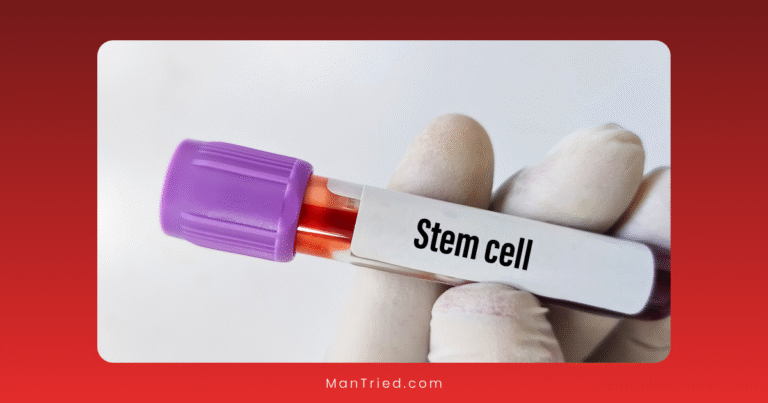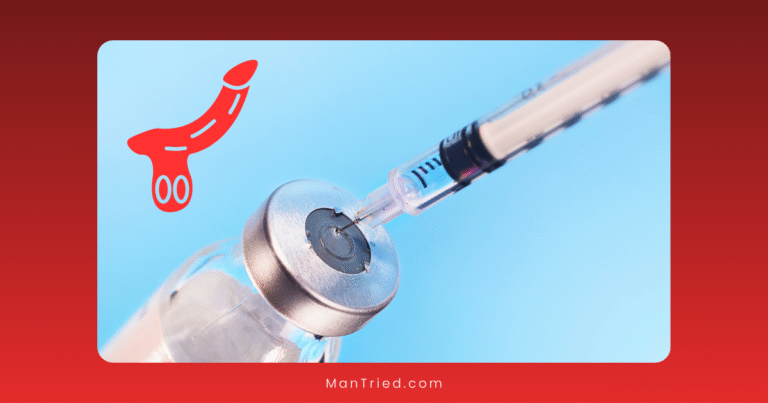Exosome Therapy: The Next Frontier in Sexual Rejuvenation

In the rapidly evolving world of regenerative medicine, a microscopic powerhouse is making waves in sexual health treatments: exosomes. These tiny cellular messengers are revolutionizing how we approach sexual rejuvenation, offering promising solutions for both men and women seeking to restore function, sensation, and satisfaction without invasive surgeries.
But what exactly are exosomes, how do they work, and are they living up to the hype? Let’s dive into the cutting-edge science and real-world applications of what many experts are calling the next frontier in sexual wellness.
What Are Exosomes? The Cellular Messengers Explained
Imagine your body’s cells have their own text messaging system—that’s essentially what exosomes are. These nano-sized vesicles (typically 40-160 nanometers) are released by cells throughout your body, especially stem cells, carrying important molecular information from one cell to another.
“Exosomes are essentially tiny bubbles filled with growth factors, proteins, lipids, and genetic material that cells use to communicate with each other,” explains Dr. Amy Killen, a regenerative medicine specialist focusing on sexual health. “Think of them as biological FedEx packages delivering regenerative instructions to damaged or aging tissues.”
Unlike whole stem cell treatments, exosome therapy utilizes only these communication particles, which research suggests may offer similar benefits with potentially fewer complications and regulatory hurdles.
The Science Behind Sexual Rejuvenation with Exosomes
Sexual function, regardless of gender, relies on healthy:
- Blood vessels for adequate flow
- Nerve tissue for sensation
- Smooth muscle for proper response
- Connective tissue for structure
As we age or experience health challenges, these tissues can deteriorate, leading to sexual dysfunction. Exosomes work through several mechanisms to address these issues:
1. Promoting Angiogenesis (New Blood Vessel Formation)
Exosomes transfer pro-angiogenic factors like vascular endothelial growth factor (VEGF) to endothelial cells, stimulating the formation of new blood vessels. For sexual function, this means improved blood flow to genital tissues—essential for both male erections and female arousal.
2. Reducing Inflammation
Chronic inflammation can damage sexual tissues over time. Exosomes have potent anti-inflammatory properties, suppressing inflammatory responses and creating an environment conducive to healing and regeneration.
3. Stimulating Collagen Production
Exosomes encourage fibroblasts to produce more collagen and elastin, improving tissue elasticity and firmness. This is particularly beneficial for vaginal rejuvenation and may help with certain forms of erectile dysfunction related to tissue structure.
4. Nerve Regeneration and Protection
Some of the most promising research shows exosomes’ ability to support nerve regeneration—crucial for sexual sensation and function, especially after injuries or surgeries like prostatectomy.
Applications for Women: Vaginal Rejuvenation and Beyond
For women, exosome therapy is showing remarkable promise in addressing several concerns:
Vaginal Atrophy and Dryness
As estrogen levels decline during menopause, vaginal tissues often become thinner, drier, and less elastic. Traditional treatments typically involve hormone replacement or laser procedures.
Exosome therapy offers a different approach. When applied to vaginal tissues, exosomes can:
- Stimulate collagen synthesis, improving elasticity and thickness
- Enhance natural lubrication by supporting glandular function
- Improve blood flow for better arousal response
- Normalize vaginal pH, potentially reducing infection risk
A 2025 clinical study found that women receiving adipose-derived mesenchymal stem cell exosome treatments reported an 87% improvement in vaginal dryness and a 72% improvement in comfort during intercourse after just two treatments.
Sexual Response and Satisfaction
Beyond addressing physical symptoms, exosome therapy may enhance overall sexual satisfaction by:
- Improving clitoral and labial sensitivity
- Enhancing vaginal muscle tone
- Supporting orgasmic function
- Reducing painful intercourse (dyspareunia)
“What’s particularly exciting about exosome therapy for female sexual health is that it’s addressing the root physiological causes of dysfunction, not just masking symptoms,” notes Dr. Rachel Wilson, gynecologist and sexual medicine specialist. “Many of my patients report not just resolution of problems, but enhancement beyond their baseline.”
Stress Urinary Incontinence
While not directly related to sexual function, stress urinary incontinence often co-occurs with sexual health concerns and can significantly impact intimacy. Exosome treatments targeting the pelvic floor have shown promising results in strengthening these tissues and improving continence.
Applications for Men: Erectile Function and Performance
For men, sexual dysfunction primarily manifests as erectile difficulties, affecting an estimated 150 million men worldwide, with projections indicating over 322 million cases by 2025.
While PDE5 inhibitors like Viagra remain the first-line treatment, up to 35% of patients don’t respond adequately to these medications. This is where exosome therapy is finding its niche.
Erectile Dysfunction Treatment
Exosome therapy for ED typically involves injecting exosomes directly into the corpus cavernosum of the penis, where they:
- Enhance endothelial cell function for better blood flow
- Support smooth muscle cell health for improved rigidity
- Promote nerve health for better sensation and response
- Reduce inflammation that may be impeding function
In animal studies, exosomes derived from adipose and bone marrow stem cells have shown significant improvements in erectile function, particularly in diabetic and post-surgical models of ED.
Performance Enhancement
Beyond treating dysfunction, some men are seeking exosome therapy for sexual enhancement:
- Improved erection quality and sustainability
- Enhanced sensitivity
- Better overall sexual performance
- Potential increases in size due to improved blood flow
Dr. Jason Campbell, a urologist specializing in men’s sexual health, cautions: “While we’re seeing promising results for genuine erectile dysfunction, the ‘enhancement’ market is still largely unproven. I advise patients to maintain realistic expectations about what these treatments can achieve.”
The Treatment Experience: What to Expect
If you’re considering exosome therapy for sexual rejuvenation, here’s what the typical process involves:
1. Consultation and Evaluation
A thorough assessment of your sexual health concerns, medical history, and goals helps determine if exosome therapy is appropriate for you. This may include:
- Physical examination
- Blood tests to rule out hormonal or other medical issues
- Discussion of expectations and alternative treatments
2. The Procedure
Depending on your gender and specific concerns:
For women:
- Topical numbing cream is typically applied
- Exosomes may be delivered via injection to specific areas, applied topically, or combined with procedures like microneedling
- The procedure usually takes 30-60 minutes
- Most women report minimal discomfort
For men:
- Local anesthetic is administered
- Exosomes are typically injected into the corpus cavernosum
- The procedure usually takes about 30 minutes
- Discomfort is generally minimal and brief
3. Recovery and Results
- Most patients can resume normal activities immediately
- Sexual activity is typically restricted for 3-7 days
- Initial results may be noticed within weeks
- Optimal results usually develop over 2-3 months
- Effects may last 12-18 months, depending on individual factors
2025 Advancements: What’s New This Year
The field of exosome therapy has seen remarkable progress in 2025:
Enhanced Exosome Isolation Techniques
Improved microfluidic systems have led to higher purity exosome preparations with greater therapeutic potential. This means more potent treatments with more predictable outcomes.
Personalized Exosome Formulations
Cutting-edge clinics are now offering personalized exosome treatments based on individual biomarkers, tailoring the therapy to address specific underlying causes of sexual dysfunction.
Combination Approaches
Synergistic protocols combining exosomes with other regenerative treatments are showing enhanced results:
- Exosomes + PRP (platelet-rich plasma)
- Exosomes + low-intensity shockwave therapy
- Exosomes + specific peptides
Improved Delivery Systems
New hydrogel delivery systems are extending the therapeutic window of exosome treatments, allowing for more sustained release and potentially longer-lasting results.
The Evidence: What Research Shows
While exosome therapy for sexual rejuvenation is promising, it’s important to understand the current state of evidence:
Preclinical Evidence
Animal studies show strong positive results, particularly for:
- Erectile function in diabetic models
- Recovery after cavernous nerve injury
- Vaginal tissue regeneration
Clinical Evidence
Human studies are more limited but growing:
- Several small clinical trials show improvements in female vaginal health measures
- Early-stage trials for ED show promising safety profiles and efficacy signals
- Real-world data from clinics suggests high patient satisfaction
Dr. Michael Peterson, reproductive endocrinologist and researcher, notes: “The preclinical data is compelling, and early clinical results are encouraging. However, we need larger, controlled trials before exosome therapy can be considered standard of care for sexual dysfunction.”
Limitations and Considerations
Despite the excitement, exosome therapy has important limitations to consider:
Regulatory Status
Exosome treatments for sexual rejuvenation are not FDA-approved for specific indications, though they may be offered under practice of medicine exceptions. The regulatory landscape continues to evolve.
Standardization Challenges
There’s significant variability in how exosomes are isolated, characterized, and administered, making it difficult to compare treatments across providers.
Cost Considerations
As an emerging therapy not covered by insurance, treatments typically range from $3,000-$8,000, depending on the protocol and provider.
Long-term Data
While safety profiles appear favorable, long-term outcome data beyond 2-3 years is still limited.
Is Exosome Therapy Right for You?
Exosome therapy may be worth considering if:
- You haven’t responded well to conventional treatments
- You prefer regenerative approaches over pharmaceutical or surgical options
- You’re looking for potentially longer-lasting solutions
- You’re willing to try treatments with promising but still-emerging evidence
- You understand the cost implications of treatments likely not covered by insurance
It may not be appropriate if:
- Your sexual dysfunction has an untreated underlying cause (hormonal, psychological, relationship)
- You have active infections or certain bleeding disorders
- You’re seeking guaranteed results (outcomes vary significantly between individuals)
- You’re pregnant or trying to conceive
The Future of Sexual Rejuvenation
Looking beyond 2025, the future of exosome therapy for sexual rejuvenation appears bright, with several exciting developments on the horizon:
- Engineered exosomes specifically designed to target sexual tissue regeneration
- Oral or topical delivery systems making treatments less invasive
- Combination with wearable technology for monitoring and optimizing outcomes
- AI-driven personalization of treatment protocols based on individual biomarkers
The Bottom Line
Exosome therapy represents a genuinely novel frontier in sexual rejuvenation, offering a regenerative approach that addresses root causes rather than just symptoms. While still emerging, the science is compelling, and real-world results are encouraging.
If you’re considering exosome therapy for sexual health concerns, seek out providers with specific expertise in both regenerative medicine and sexual health, and approach the treatment with informed expectations about its current evidence base and limitations.
As with any emerging treatment, the field will continue to evolve rapidly, with better protocols, more standardization, and stronger evidence likely to develop in the coming years.






